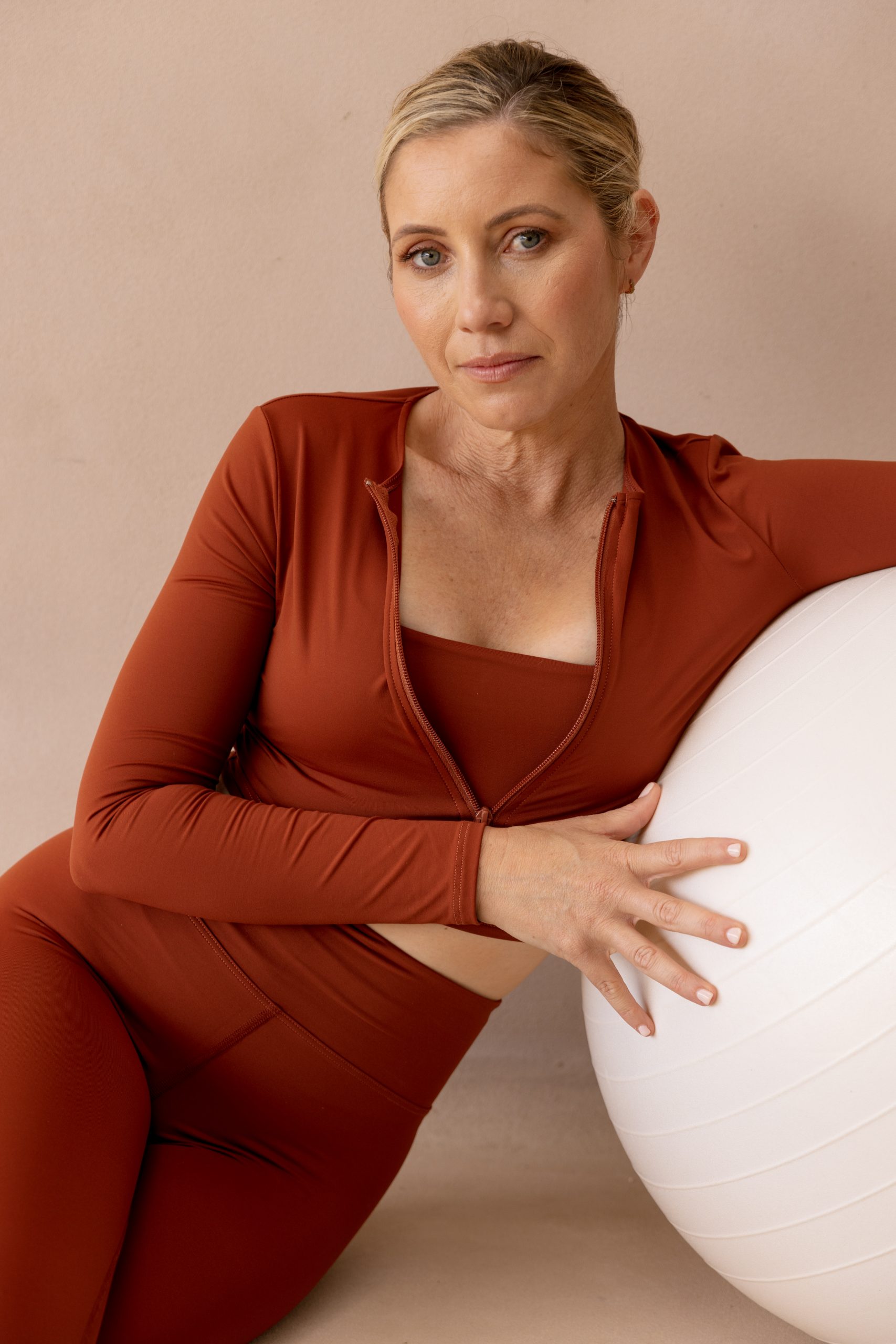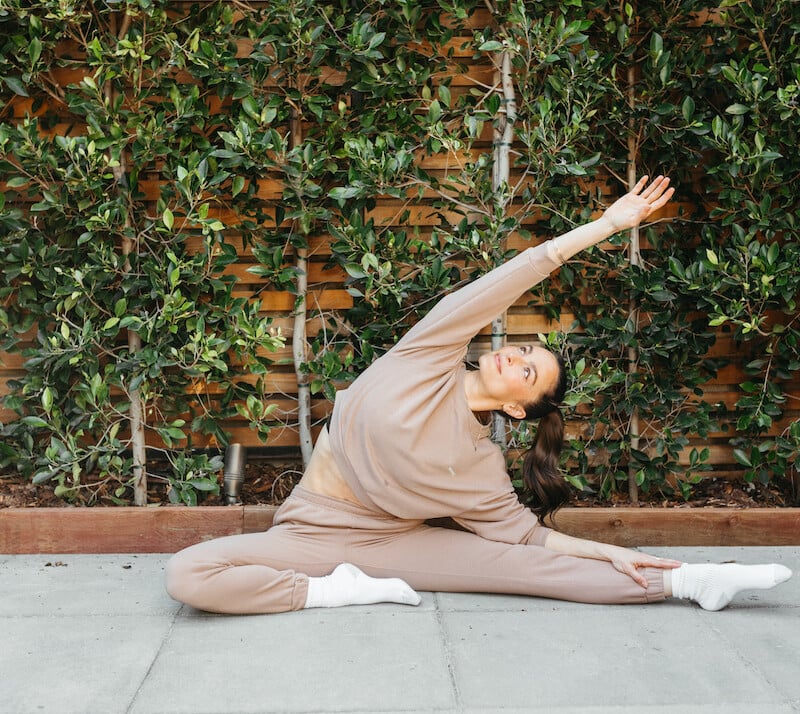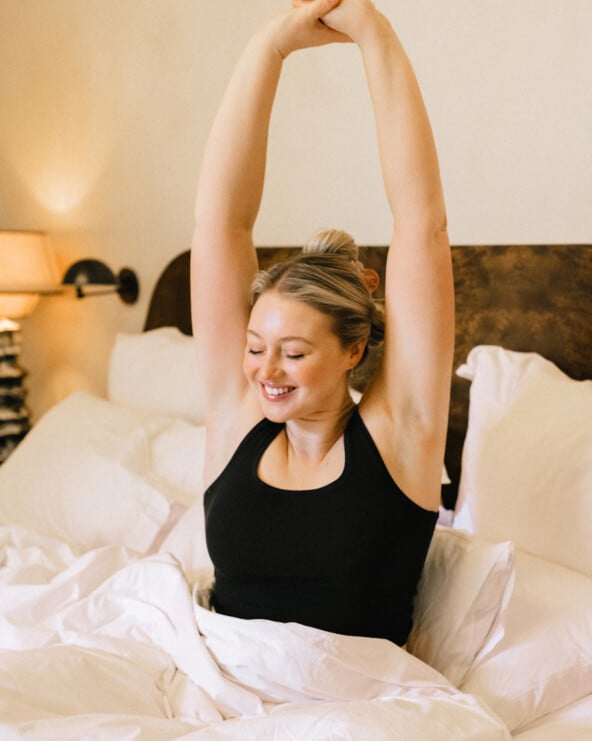Ah, diet culture. There’s little more harmful to the psyche, body, and spirit than the all-pervasive beliefs and assertions that our appearance is more important than our wellbeing. How did we go so long normalizing calorie restriction and exercising to dangerous extents in pursuit of a body shape that society deems “acceptable”? Thankfully, movements of body neutrality and acceptance are now dominating the conversations. And instead of taxing ourselves with hours of cardio to drop weight fast, we’re coming around to the reality that strength training benefits surpass aesthetics alone. In fact, building strength is a great, supportive way to help you feel better in all areas of your life. Say it again for the folks in the back.
Nowadays, I can say all of this with conviction, but it wasn’t long ago that I was struggling to believe everything I just wrote above. Like many, emboldened and empowered by health-at-any-size frameworks, I’ve made huge strides in reshaping my own relationship with my body. In embarking on my fitness journey, however, a fear of building muscle still remained.
Feature image by Michelle Nash.

But I’ve learned that the best thing to do when I feel fear is to confront it. So I sought to unlearn the harmful messaging that’s influenced my own outlook and opinions on my body for far too long. This pursuit brought me to Kirsten King, founder and principal instructor of Fluidform Pilates. Below, King breaks down the strength training benefits for women plus how to make it a (game-changing) part of your workout routine.

Owner and principal instructor of Fluidform, Kirsten King is a passionate advocate for the functional and aesthetic benefits that movement can bring to the human form. Since founding Fluidform in 2012, Kirsten’s name has become synonymous with a teaching style that is engaging, supportive, and effective, combining highly personalized programming with in-depth technical knowledge.
Can you speak to strength training benefits? How does this form of fitness support women’s bodies specifically?
There are countless benefits that come with working out and being active. But how does this translate to strength training? While it may be common knowledge that cardio gets your heart rate high, the conversation on social media leaves much to be desired in terms of highlighting strength training beyond building muscle alone.
King is adamant about changing this. “Strength conditioning, and specifically the functional movements we teach at Fluidform, are designed to support your everyday life, particularly the health and function of your spine and joints.” Functional fitness is a method of exercise designed to, as King notes, “support the body to ensure your day-to-day movements can be performed with ease and no pain.” Oof—sounds lovely.
Change is inevitable, and something our bodies are subject to all throughout our lives. It’s important to focus on functional fitness, as these movements support the shifts our bodies go through as we age and experience life milestones, such as pregnancy. “Strength training isn’t always about lifting weights, but using a combination of isometric and isotonic holds to build strength without causing stress on the joints and body,” says King. In other words, low-impact, high-reward.

What should someone know who’s just starting their strength training journey?
King lives by the rule that consistency is key. “Change doesn’t happen overnight—listen to your body, progress at your own pace, and trust the process of functional movement,” she advises. And for those of us who aren’t into spending our entire lives at the gym (I expect a unanimous raise of hands), King has good news. “We know that 20 minutes a day done every day will see better results than two hours just a few days a week. The muscles in your body require effective, repetitive movements to strengthen and tone.” Try sneaking in a mini workout first thing in the morning, during lunch, or by taking a movement break to wind down your day. Remember: once you start, the hardest part’s over.
It’s commonly thought (and feared) that women will get “too bulky” if they start strength training. True or false?
According to King, it depends on the workout. “Strength training is a broad term. There are some forms of strength training that will create bulk,” she notes. But she adds that focusing on functional movements or specific Pilates practices “works your slow twitch, stabilizer muscles. These are all the small muscles that support your joints, stability, balance, and posture.”
King designs her workouts to incorporate slow, controlled movements that “effectively balance your body, creating long, lean, and toned muscles, avoiding the unwanted ‘bulk’ that is achieved by working your larger, global muscles.”

How many times per week should people do strength training. For how long?
Again, consistency and repetition add up to strength training success. “Controlled, functional movements should be practiced a minimum of 20 minutes a day, five days a week,” suggests King.
Is it true that we should target different parts of the body on different days?
“There are benefits to working specific muscles continuously,” says King. “This will fatigue the muscles, which is important to creating change and strength in the body.” If you follow King’s recommendation of practicing functional movements 20 minutes a day, it’s important to design your workouts so that specific muscle groups get “continual and consistent focus.” At Fluidform, King offers short, targeted workouts for a deep burn.

How can strength training workouts be made more challenging?
Equipment is effective, but King says form and intention are key. Using heavier weights “does make the movements harder,” she notes, but strength training benefits come with how you use your props to challenge or support your muscles. “Controlled, functional movements using your own body weight can be just as effective as using weights,” King adds. “It comes down to how you layer movements and work them continuously to fatigue, burn and strengthen.”
What activities or exercises should strength training be supplemented with?
I breathed a deep sigh of relief when King listed walking (my old-school favorite form of exercise), as being an effective complement to functional training. “Cardio can increase your heart rate, which promotes a healthy heart and helps to release endorphins to improve your mood and energy.”
But when it comes down to it, feel-good fitness wins out. “It’s important to integrate movement that makes you feel good,” King emphasizes. “Whether that’s meditation, yoga, high-intensity training, or running.” Follow the fun, reap the reward.






